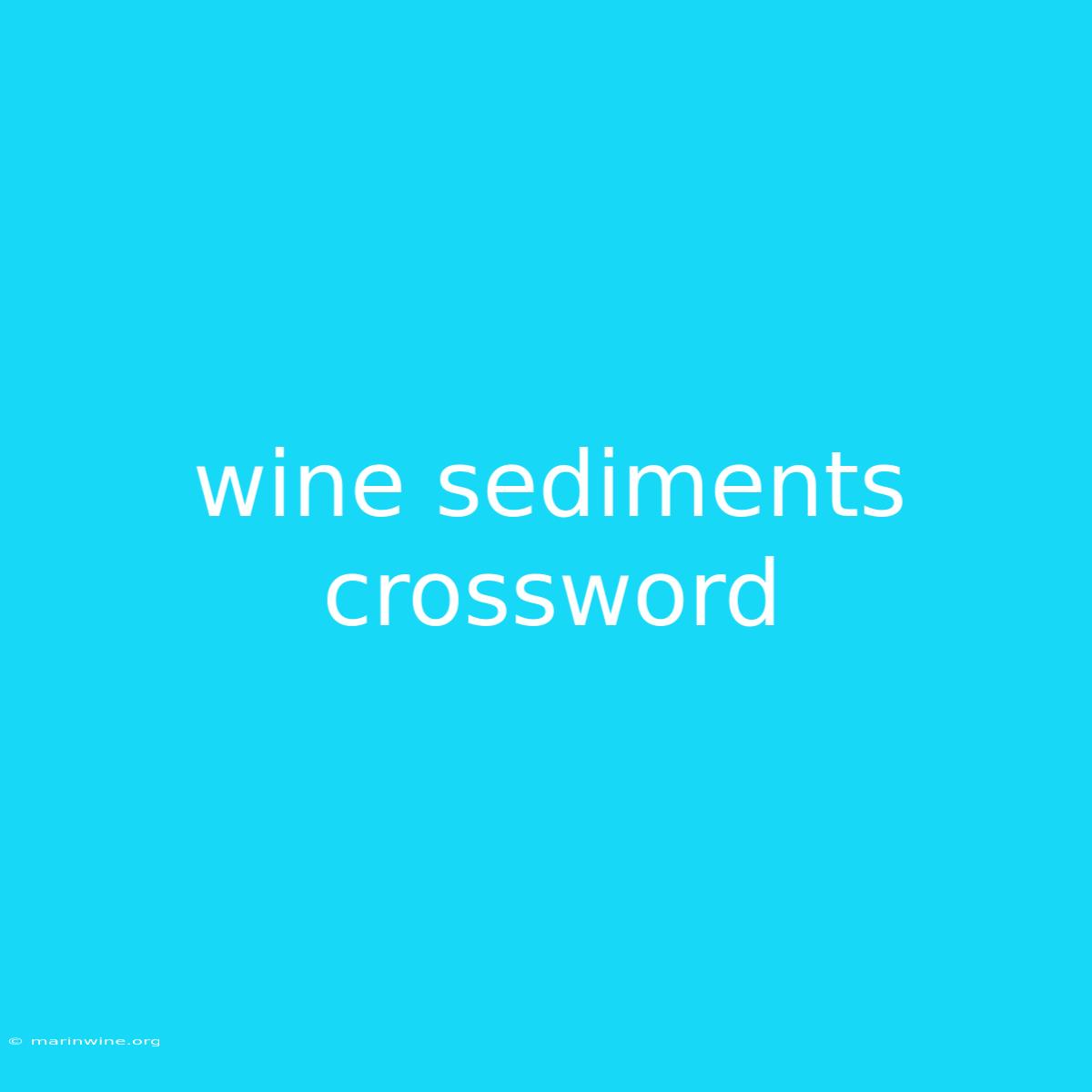Wine Sediments: A Crossword Puzzle for Connoisseurs
Have you ever pondered the swirling sediment at the bottom of your wine bottle? These tiny particles, often seen in older wines, tell a fascinating story of the wine's journey. Let's delve into the world of wine sediments with a crossword puzzle that will challenge and enlighten your palate.
Why It Matters: Understanding wine sediments is crucial for any wine lover, as it helps decipher the aging process and the wine's history. It can also reveal the wine's quality and potential for further development.
Key Takeaways:
| Term | Definition |
|---|---|
| Sediment | Solid particles that settle at the bottom of a wine bottle during aging. |
| Tannins | Polyphenols found in grapes, responsible for bitterness and astringency, contributing to sediment formation. |
| Tartaric Acid | Organic acid found in grapes, forming crystals that create sediment. |
| Age | Older wines tend to have more sediment due to longer aging and precipitation of compounds. |
| Storage | Proper storage conditions, like temperature and humidity, can impact sediment formation. |
Wine Sediments: A Deep Dive
Sediment
Sedimentation occurs when wine ages in the bottle, allowing particles to settle at the bottom. These particles can vary in size and texture, depending on the wine's varietal, production methods, and age.
Tartaric Acid Crystals
These crystals, commonly known as "wine diamonds," are a harmless byproduct of tartaric acid naturally present in grapes. They are typically white and sparkle in the light.
Tannins
Tannins are complex polyphenols that contribute to the structure and longevity of red wines. They can form small, dark particles, known as "tannic sediment," which can add depth and complexity to the wine's flavor profile.
Other Sediments
Various other components can form sediment, such as yeast, proteins, and grape pulp fragments. These components are often seen in wines that have not been fined or filtered.
Sediment and Wine Quality
The presence of sediment does not necessarily indicate poor wine quality. In fact, some wines are bottled unfined, allowing for natural sedimentation that can contribute to their complexity and character.
Decanting and Sediment
Decanting is the process of carefully pouring wine from one container to another, leaving the sediment behind. It's recommended for wines with visible sediment, as it enhances the wine's aroma and flavor by removing the particles that can affect their expression.
Crossword Puzzle: Wine Sediments
[Insert crossword puzzle here]
FAQ: Wine Sediments
Q: Is sediment harmful to drink? A: No, wine sediment is generally harmless to consume. It's a natural part of the aging process and doesn't affect the wine's safety or taste.
Q: How do I know if a wine will have sediment? A: Wines that have been aged for several years, especially red wines, are more likely to have sediment. Check the bottle's label for clues, such as "unfined" or "unfiltered."
Q: Should I always decant wine with sediment? A: Not always. While decanting can improve the wine's flavor and aroma, it's not always necessary. Some people prefer the subtle texture and flavors that sediment can contribute.
Tips for Dealing with Wine Sediments:
- Check the bottle before serving: Hold the bottle up to the light to see if there's sediment present.
- Decant carefully: Use a decanter or a clean wine glass to pour the wine slowly, leaving the sediment in the bottle.
- Avoid swirling: Swirling can stir up the sediment and create a cloudy appearance.
- Chill wine before decanting: Cooling wine helps slow down the settling process, making it easier to pour without disturbing the sediment.
- Enjoy the sediment: Some people like to savor the last drop of wine with a bit of sediment, as it adds unique textures and aromas.
Summary: Wine Sediments
Wine sediments are a natural part of the aging process, offering clues about the wine's history, quality, and character. While some may consider them a sign of "old wine," they can be an indication of quality and depth. Whether you decant or embrace the sediment, understanding its role in wine can enhance your appreciation for the art of winemaking.
Closing Message: The next time you encounter wine sediment, remember it's not a flaw but a testament to the wine's evolution. Enjoy the complexity it brings to your glass!

